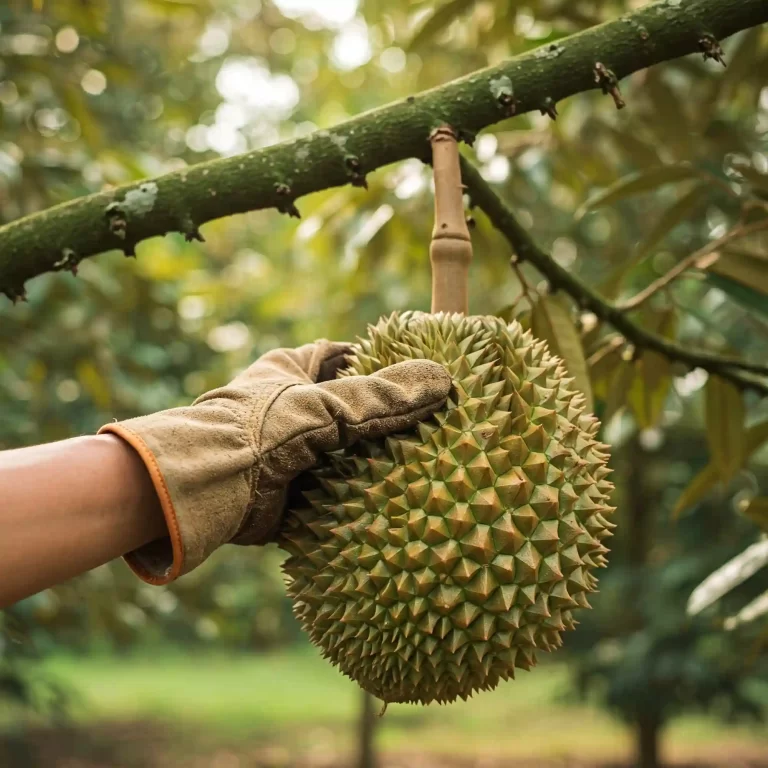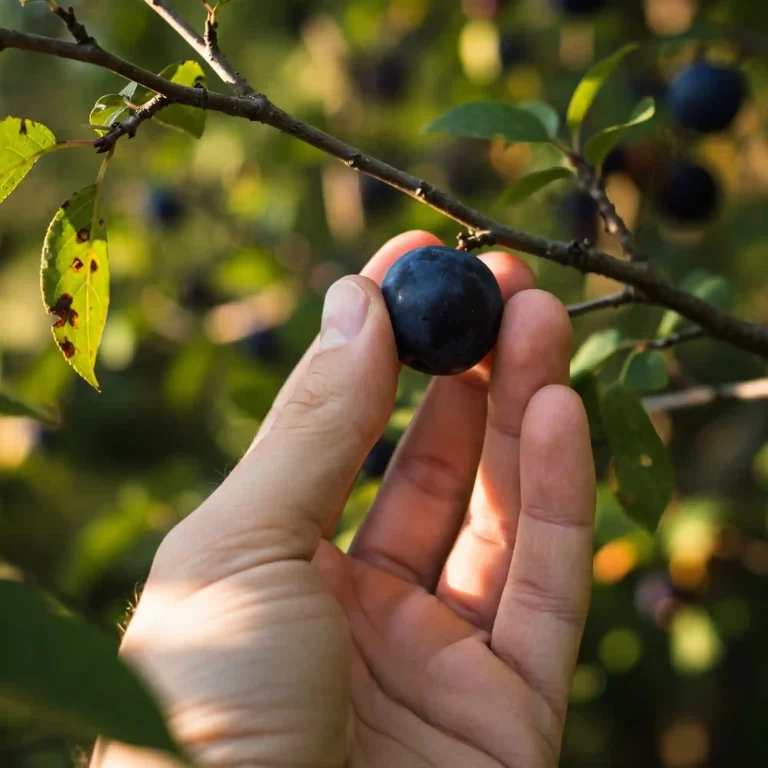Have you ever dreamt of harvesting those golden, tangy cloudberries from your own garden? You crave the unique flavor, the rare treat that these Arctic berries offer. But the thought of navigating their finicky growing requirements might leave you feeling overwhelmed. You’re not alone. I’ve been there, too, struggling to understand why my plants weren’t thriving. But through years of trial and error, I’ve discovered the secrets that make cloudberry cultivation not just possible, but rewarding. Let me guide you through the process, so you can enjoy the satisfaction of growing these precious fruits yourself.
The Allure of Cloudberries: Why You Should Grow Them
There’s something truly magical about cloudberries. Their unique flavor, a captivating blend of tart and sweet, sets them apart from any other berry you’ve likely tasted. Imagine biting into a cloudberry, and that burst of flavor – a symphony of tangy citrus with a hint of sweetness – explodes on your palate. It’s a sensory experience unlike any other.
Beyond their exquisite taste, cloudberries offer a nutritional punch. They are packed with vitamin C, a powerful antioxidant that supports your immune system. These berries are also a good source of dietary fiber, which aids in digestion and helps maintain a healthy gut. And let’s not forget the antioxidants, which help protect your cells from damage.
But the allure of cloudberries extends beyond their culinary and nutritional value. Growing them is a rewarding challenge for any gardener. These Arctic natives thrive in cool, moist conditions, demanding a unique set of cultivation skills. You’ll learn to understand the nuances of soil acidity, the importance of proper drainage, and the delicate dance of providing adequate moisture without overwatering. Successfully cultivating cloudberries is a testament to your gardening prowess and a source of immense pride.
The journey of growing cloudberries is not just about the end result – the delicious harvest. It’s about the process itself. It’s about observing the delicate white flowers bloom in spring, watching the berries gradually ripen into their golden hue, and experiencing the satisfaction of nurturing these unique plants. It’s a connection with nature, a reminder of the resilience of life in even the harshest environments.
Growing cloudberries is more than just a gardening project; it’s an adventure. It’s about embracing the challenge, learning from your successes and setbacks, and ultimately reaping the rewards of your hard work.
- Did you know? Cloudberries, scientifically known as Rubus chamaemorus, are often referred to as “Arctic gold” due to their rarity and high value. They are typically found in peat bogs and acidic wetlands across the Arctic and subarctic regions.
Nutritional Value of Cloudberries (per 100g):
| Nutrient | Amount |
| Vitamin C | 44mg |
| Dietary Fiber | 3.6g |
| Vitamin E | 1.5mg |
| Iron | 0.8mg |
| Potassium | 180mg |
Growing cloudberries is an invitation to connect with nature on a deeper level. It’s about bringing a piece of the wild into your own backyard and experiencing the joy of cultivating something unique and extraordinary.
Understanding Cloudberry’s Needs: The Essential Growing Conditions
Cloudberries, like any plant, have specific needs that must be met for successful cultivation. Understanding these requirements is crucial for creating a thriving environment for your plants. Let’s delve into the essential growing conditions for cloudberries:
Climate:
Cloudberries are native to the Arctic and subarctic regions, where they thrive in cool, moist climates. They require long days of sunlight during the growing season and cold winters. Ideally, you should live in a region with a climate that mimics these conditions.
- USDA Hardiness Zones: Cloudberries are best suited for USDA Hardiness Zones 2-6. These zones experience cold winters and cool summers, providing the ideal temperature range for these plants. If you live in a warmer climate, you can still grow cloudberries with careful planning and the creation of a microclimate that provides adequate shade and consistent moisture.
Soil:
Cloudberries are particularly picky about their soil. They prefer acidic, well-drained, and organic-rich soil. Think of the boggy, peat-rich environments they inhabit in the wild.
- Soil pH: The ideal pH range for cloudberries is between 4.0 and 5.5. You can test your soil’s pH using a simple soil test kit available at most garden centers. If your soil is too alkaline, you can amend it with organic matter like peat moss or pine needles to lower the pH.
- Drainage: Good drainage is essential to prevent root rot. Waterlogged soil can suffocate cloudberry roots. If your soil tends to be heavy or clay-like, you can improve drainage by adding organic matter like compost or perlite.
Sunlight:
While cloudberries require adequate sunlight for photosynthesis, they also appreciate some shade, especially during the hottest parts of the day.
- Ideal Light Conditions: Partial shade is often ideal for cloudberry plants. You can provide shade by planting them under deciduous trees that provide dappled shade in the summer and allow more sunlight to reach the plants in the spring and fall.
By understanding and providing the right climate, soil, and sunlight conditions, you’ll create an environment where your cloudberry plants can thrive and produce a bountiful harvest.
7 Steps to Growing Cloudberry Fruits
Now that you understand the essential growing conditions for cloudberries, let’s dive into the step-by-step process of cultivating these unique fruits. Remember, patience is key, as it may take a few years for your plants to establish themselves and start producing fruit.
1. Plant Selection:
- Start with Healthy Plants: When acquiring cloudberry plants, choose healthy specimens with vibrant green foliage and no signs of disease or pests.
- Propagation Methods: You can purchase young plants from reputable nurseries or online retailers. Alternatively, you can attempt to propagate cloudberries from seeds, although this is a more challenging method.
2. Planting Time and Depth:
- Timing: The best time to plant cloudberries is in early spring or fall. This allows the plants to establish themselves before the harsh winter or the heat of summer.
- Planting Depth: Plant your cloudberries at the same depth they were growing in their original containers. Ensure that the crown of the plant is level with the soil surface.
3. Spacing:
- Allow for Adequate Growth: Space your cloudberry plants appropriately to allow for adequate air circulation and growth. A recommended spacing is 12-18 inches between plants.
4. Watering:
- Consistent Moisture: Cloudberries require consistent moisture, especially during dry periods. However, avoid overwatering, as this can lead to root rot.
- Mulching: Applying a layer of organic mulch, such as pine needles or wood chips, around the base of your plants can help retain moisture, suppress weeds, and regulate soil temperature.
5. Fertilizing:
- Light Feeding: Cloudberries are not heavy feeders. Apply a light application of a balanced, slow-release fertilizer in early spring.
- Organic Options: Consider using organic fertilizers, such as compost or well-rotted manure, to nourish your plants without harming the environment.
6. Mulching:
- Benefits of Mulching: Mulching has several benefits for cloudberry plants. It helps to retain moisture, suppress weeds, and regulate soil temperature.
- Mulch Choices: Use organic mulch materials like pine needles, wood chips, or shredded bark. Avoid using plastic mulch, as it can inhibit air circulation and moisture retention.
7. Protecting from Pests and Diseases:
- Common Pests: Keep an eye out for common pests like aphids and spider mites.
- Disease Prevention: Monitor your plants for diseases like powdery mildew and rust.
- Organic Pest Control: Use organic pest control methods whenever possible. Insecticidal soap and neem oil can be effective against many common pests.
By following these steps and providing your cloudberry plants with the right care, you’ll increase your chances of success and enjoy a bountiful harvest of these unique and delicious fruits.
Propagation Methods: Expanding Your Cloudberry Patch
If you’ve successfully cultivated cloudberries and want to expand your patch, there are a few propagation methods you can try:
1. Division:
- Timing: The best time to divide cloudberry plants is in early spring or late fall when the plants are dormant.
- Process: Carefully dig up a mature cloudberry plant and gently separate it into two or more divisions, ensuring each division has healthy roots and shoots.
- Replanting: Replant the divisions in a well-prepared bed with acidic, well-drained soil. Water them thoroughly and provide them with adequate shade during the establishment phase.
2. Cuttings:
- Difficulty: Propagating cloudberries from cuttings can be more challenging than division.
- Technique: Take stem cuttings from healthy, non-flowering shoots in early summer. Dip the cuttings in rooting hormone and plant them in a well-draining potting mix.
- Care: Maintain a consistently moist environment and provide bottom heat to encourage root development.
Important Considerations:
- Patience is Key: Both division and cuttings can take time to establish themselves. Be patient and provide consistent care to ensure their success.
- Genetic Diversity: If you are propagating cloudberries from a single plant, you may want to consider obtaining cuttings or divisions from multiple plants to maintain genetic diversity and improve the overall health and resilience of your cloudberry patch.
By exploring these propagation methods, you can expand your cloudberry patch and continue to enjoy the unique flavors and benefits of these remarkable fruits.
Harvesting and Enjoying Your Cloudberries
The culmination of your efforts is finally here: harvest time! This is the moment you’ve been waiting for, the reward for all your hard work and dedication.
1. Harvest Time:
- Ripeness: Cloudberries typically ripen from late summer to early fall. Keep a close eye on your plants, as the ripening period can vary depending on your climate and growing conditions.
- Color Cue: Ripe cloudberries turn a beautiful golden yellow color. Avoid picking berries that are still green or partially green, as they will not have developed their full flavor.
2. Harvesting Techniques:
- Gentle Handling: When harvesting, gently pick the berries by hand, being careful not to damage the delicate plants. Avoid pulling on the stems, as this can weaken the plant.
- Harvesting Frequency: Harvest the berries regularly to encourage continued production.
3. Storage and Preservation:
- Fresh Storage: Cloudberries are best enjoyed fresh. Store them in the refrigerator in an airtight container for up to a few days.
- Preserving the Harvest: If you have a bumper crop, consider preserving your cloudberries for enjoyment throughout the year. Popular methods include:
- Jams and Jellies: Cloudberry jam is a culinary delight. Its unique flavor adds a tangy twist to toast, pancakes, and desserts.
- Freezing: Freezing cloudberries is a simple way to preserve their flavor and nutrients. Simply spread the berries on a baking sheet and freeze them individually. Once frozen, transfer them to an airtight container or freezer bag for long-term storage.
4. Culinary Uses:
- Fresh Eating: Enjoy cloudberries fresh off the bush for a burst of flavor.
- Baking: Incorporate cloudberries into cakes, muffins, and pies.
- Smoothies: Add a handful of cloudberries to your morning smoothie for a nutritious and delicious boost.
- Jams and Preserves: As mentioned earlier, cloudberry jam is a culinary treasure. You can also use them to make jellies, sauces, and syrups.
- Savory Dishes: Cloudberries can also be used in savory dishes, such as salads and sauces for poultry or fish.
Harvesting your own cloudberries is a truly rewarding experience. The taste of these freshly picked berries is incomparable to anything you can buy at the store. Enjoy the fruits of your labor and savor the unique flavors of this incredible fruit.
Troubleshooting Common Growing Challenges
Even with the best care, you might encounter some challenges while growing cloudberries. Don’t worry! Here are some common growing problems and how to address them:
1. Poor Fruit Production:
- Insufficient Pollination: As mentioned earlier, cloudberries require both male and female plants for successful pollination. If you have only one plant, you’re unlikely to get any fruit. Ensure you have both male and female plants in your garden.
- Nutrient Deficiencies: Cloudberries need a balanced supply of nutrients. If your plants aren’t producing fruit, consider testing your soil and amending it with the necessary nutrients.
- Improper Watering: Both overwatering and underwatering can stress your plants and reduce fruit production. Ensure your plants receive consistent moisture but avoid waterlogging the soil.
2. Disease and Pest Problems:
- Powdery Mildew: This fungal disease can cause a white powdery coating on the leaves. To prevent powdery mildew, ensure good air circulation around your plants and avoid overhead watering.
- Aphids: These tiny insects can sap the sap from your plants, weakening them. You can control aphids by spraying them with a strong jet of water or using insecticidal soap.
- Spider Mites: These microscopic pests can also cause damage to your plants. You can control spider mites by regularly inspecting your plants and spraying them with insecticidal soap or neem oil.
3. Plant Decline:
- Monitor Your Plants: Regularly inspect your plants for signs of stress, such as wilting, yellowing leaves, or stunted growth.
- Address Issues Promptly: If you notice any problems, address them promptly to prevent further damage to your plants. This may involve adjusting watering practices, fertilizing, or controlling pests and diseases.
By being vigilant and addressing these challenges promptly, you can help your cloudberry plants thrive and produce a bountiful harvest.
FAQs
Let’s address some of the most frequently asked questions about growing cloudberries:
Q: Can I grow cloudberries in containers?
- A: While challenging, it is possible to grow cloudberries in large containers. You’ll need to use a well-draining potting mix and ensure that the containers are large enough to accommodate the plant’s root system. However, container-grown cloudberries may require more frequent watering and protection from extreme temperatures.
Q: Are cloudberries self-pollinating?
- A: No, cloudberries are dioecious, meaning they have separate male and female plants. You’ll need to plant both male and female plants in close proximity to ensure successful pollination and fruit production.
Q: How long does it take for cloudberry plants to produce fruit?
- A: It can take several years for newly planted cloudberries to establish themselves and begin producing fruit. Be patient and provide consistent care during this establishment phase.
Q: Can I grow cloudberries in my backyard if I live in a warmer climate?
- A: While challenging, it might be possible to grow cloudberries in warmer climates. However, you’ll need to create a microclimate that mimics their preferred cool, moist conditions. This may involve providing adequate shade, ensuring consistent moisture, and potentially using cooling measures during hot periods. Success may be limited in warmer climates.
Q: What are some other challenges I might face when growing cloudberries?
- Competition from Weeds: Weeds can compete with cloudberries for water, nutrients, and sunlight. Keep the area around your plants weed-free to ensure they have the resources they need to thrive.
- Bird Damage: Birds can be attracted to the ripe berries. You may need to protect your plants with bird netting to prevent them from devouring your harvest.
By addressing these frequently asked questions and being prepared for potential challenges, you can increase your chances of successfully growing cloudberries and enjoying the fruits of your labor.




